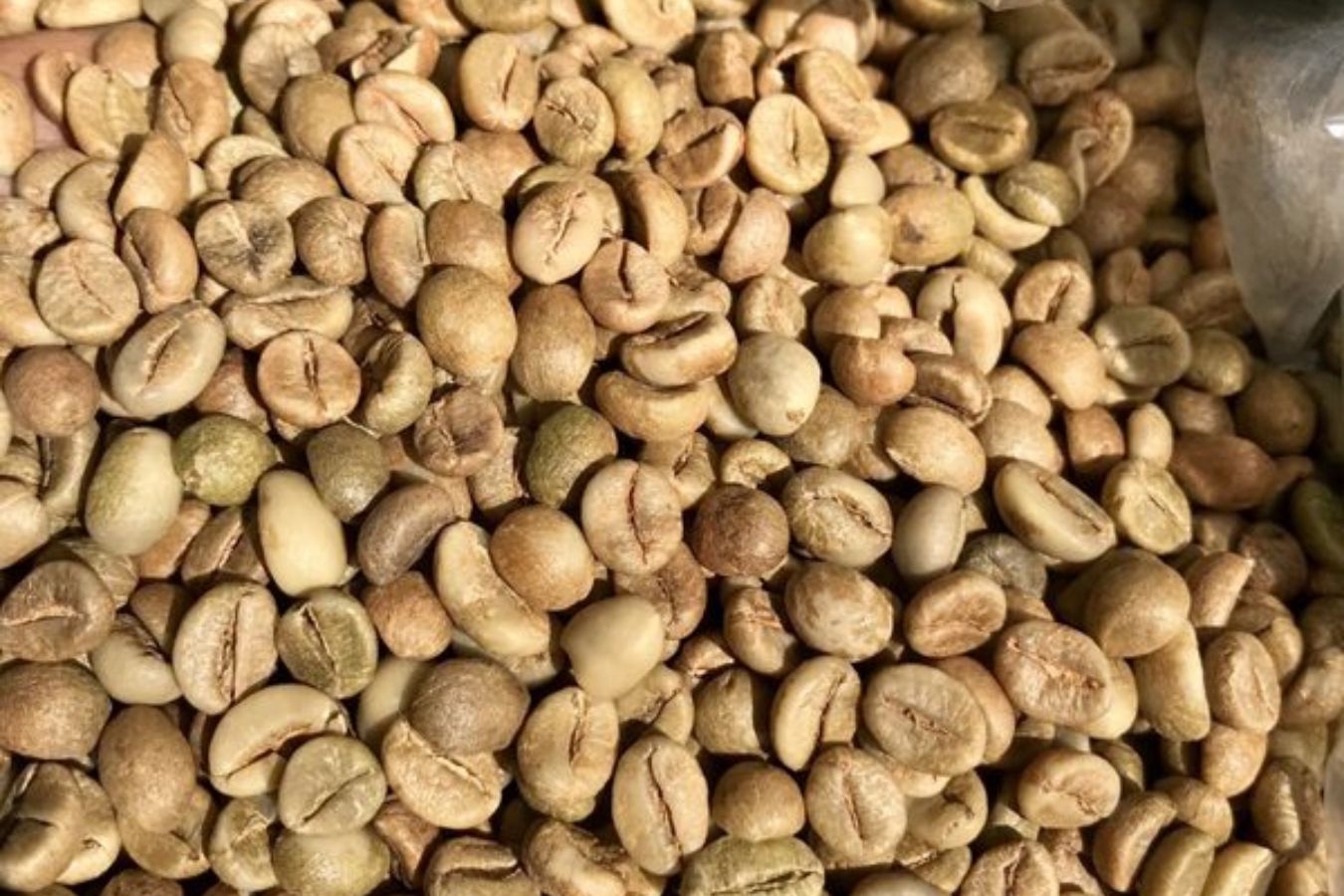
Because dry processing is more accessible than wet processing, it accounts for about 80% of coffee production in Vietnam.
Robusta coffee beans
Robusta coffee (whether as a bean, brewed in a cup, or the plant itself) is coffee derived from the plant species Coffea canephora. Coffea canephora is one of the two main species of coffee plants grown around the world, the other being Coffea arabica, also known as “Arabica” coffee, of which Coffea canephora, along with Coffea eugenioides, is a parent.
Though Arabica used to dominate global coffee production by a wide margin—around 80/20—Robusta now accounts for slightly more than 40% of the coffee grown globally, according to World Coffee Research.

Though Robusta coffee is often considered to be of “lower” quality than Arabica coffee, it is much easier to grow and is often more resistant to disease and drought. It is a more “robust” coffee plant than its sister species in these ways. In addition, it contains nearly twice as much caffeine as Arabica.
Coffee beans varieties
We’ll be talking about four different types of coffee beans here: Arabica (Coffee arabica), Robusta (Coffee caniphora), Liberica (Coffee Liberia), and Excelsa (Coffee excels) (Coffee liberica var. dewevrei). Let’s look at what distinguishes these various types of coffee.
What is dry processed robusta coffee?
Dry processing is one of the most basic and oldest coffee processing procedures in history, and it’s commonly used to process Robusta coffee. This procedure aims to lower the moisture content of the coffee to 10 -12 percent by drying it in the sun or using a drying appliance. Since the French imported coffee into our country in the early days, the dry processing method has been used.
Characteristics of Vietnamese dry-processed robusta coffee
Spreading coffee in the yard and allowing it to dry naturally in the sun is the most frequent dry processing method, also known as “Natural processing” or “Dry process.”

Because the entire fresh coffee bean mass is dependent on “sunshine,” it is easy to generate unevenness in the moisture content of the bean mass during drying, which is a situation for infectious microorganisms to thrive in the bean mass, resulting in a reduction in coffee taste when consumed.
The dry processing method is frequently used on low-quality coffees with thin skin, such as Robusta (tea coffee) or Excelsa (coffee) (jackfruit coffee).
Processing on a dry basis
After harvesting, coffee berries are typically laid on a drying rack/floor to remove unripe or broken berries, soil, branches, and leaves. Except in some developed countries, where machines are used, this is usually done by hand, such as in Brazil and Costa Rica.
Tumble dry or air dry
After that, lay the coffee out on a concrete floor or sieve and leave it to the sun for 1-3 weeks. It is vital to rake the island daily to ensure that it dries evenly, limit mold growth, and cover the coffee carefully at night or when it rains.
Large estates may use dryers to speed up moisture loss when the coffee has been left to dry in the sun for a few days. Static dryers with mixing, rotary drum dryers, tower dryers, and fluidized bed dryers are some examples of standard drying equipment today.
On-time completion
For dry processing, the end of the drying process is critical. Coffee cherries that aren’t dry enough are prone to bacterial and mold degradation (mold). Meanwhile, too-dry (over-dried) coffee will become brittle and produce a lot of debris when grinding (the coffee bean may also break).
The coffee beans are gathered and transported to the peeling stage to acquire green coffee and store it after completing the drying/drying process (coffee beans are dark brown and crispy).
Where to buy dry-processed Robusta green coffee?
Helena Coffee is happy to be a supplier of consistent and high-quality dry-processed Robusta coffee at a fair price, thanks to many years of experience in production, processing, and quality control. The successful creation of a closed model from the stage of product collection, selection, and preliminary processing to the location of product operation, supply, and distribution; assisting Helena Coffee in optimizing the quality control process and product stability; allowing Helena Coffee to provide products to customers at meager prices and of very high quality.

Robusta coffee’s mellow, less harsh scent highlights its flavor and is a fantastic basis for blending different coffee lines. For coffee drinkers who enjoy variety, this is an additional option.
Detailed specifications
MOISTURE: 12.5%
BLACK 0.1%, FOREIGN MATTER 0.1%, BREAK 0.3%
SIZE: 90%/S16
ORIGIN: DAK LAK / ALTITUDE 800M
PROCESSING: SUNDRIED
PACKAGE: 60KG/BAG